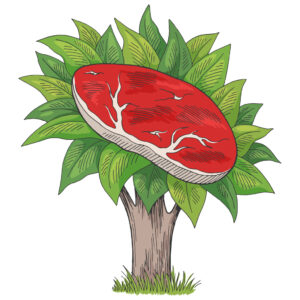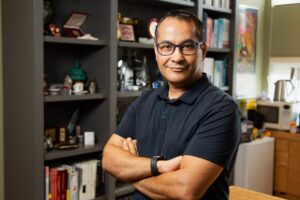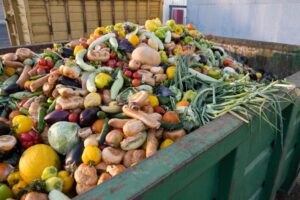Ann Veneman’s resume is impressive to say the least. As if being the director of UNICEF from 2005 to 2010 wasn’t enough, Veneman served as the US Secretary of Agriculture during the Bush II administration from 2001 to 2005. She was the first woman appointed to the prestigious cabinet role to boot. Early in her career, Veneman — she’s a fellow lawyer — worked as a public defender before transitioning to private practice and then serving in the USDA from 1986 to 1993. At USDA, worked in the international area and was ultimately appointed Deputy Secretary in 1992. In 1995 she was appointed as California’s Secretary of Food and Agriculture a position she held until 1999.
Now, Veneman serves on the Board of Directors of Nestle and on the boards of several non-profit organizations as well as on a number of advisory boards. She has also served as co-leader of the Nutrition and Physical Activity Initiative at the Bipartisan Policy Center and is a member of the Council of Foreign Relations.
Unsurprisingly, she’s been named to Forbes’ list of The World’s 100 Most Powerful Women. Now, she’s added board member of food waste fighting startup Full Harvest to her lengthy list of commitments.
“Full Harvest is on a mission to help farmers and food businesses realize new revenue opportunities while simultaneously reducing food waste. Ann deeply understands the agriculture industry and has demonstrated an unwavering commitment to the betterment of the food system. We’re honored to have Ann with us as we work to help society, the planet and the economy benefit from more full harvests,” Christine Moseley, Full Harvest CEO and founder, told AFN via email.
Full Harvest is one of the longest-running startups in the food waste mitigation space, launching in 2015 and raising $11.5 million in venture capital to-date. The B2B marketplace offers a digital end-to-end purchasing, sale, and logistics platform for surplus and imperfect produce. Farms post the surplus produce they have available on the Full Harvest site and buyers search and place orders. Full Harvest then coordinates the full end-to-end logistics of that sale.
We recently spoke to Veneman about her new role with Full Harvest, how agri-foodtech has changed during her career, and where challenges lie ahead.
How did you get connected with Full Harvest and why did you decide to join the board?
I have been a member of the advisory board for a few years now and kept up on what they are doing. Christine decided they wanted an independent board member of the board so she came to me. I’ve been pretty impressed with what they are doing over the years. I think she is doing a great job and building a great company.
I have been interested in the food waste space. We talk about increasing production so much to feed the world in 2050 but with 30% and by some estimates 40% of food in the world wasted, we need to look at all avenues to use the food we have to make sure we feed more people and that we are doing the best with the food we have already produced. The problem with fresh fruits and vegetables is that if they aren’t used they are put in a landfill where they contribute to more environmental issues rather than utilizing the product.
Full Harvest has a good B2B platform to allow food to go to processors for things like juicing or other foods like baby food. It’s perfectly good food, too. It helps the farmers find a purchaser for these products, helps food companies by providing a lower price, and it cuts down on food waste. It’s really a win for farmers, buyers, consumers, and the environment.
What is your current view of agrifood tech? Where are we getting it right?
Agriculture and the food industy have always been driven by technology. I ran the USDA and I used to like to tell people that the USDA was founded by President Lincoln to conduct research and distribute seeds to farmers. So, it was founded with the idea of looking at research: how can we do better with farming? Whether it’s improved seed varieties, livestock varieties, or something else.
Now, we are seeing technology interface with the whole farm, including things like autonomous tractors and we are getting more info on the farm. And there are all the new food tech issues we are now seeing whether it’s new kinds of foods created both with environmental concerns and consumer health in mind. There are also new crops that are being developed from some ancient grains from central America. So, I think the change in the food industry continues but it has been a changing industry over time. It’s not something new that tech is just coming in and affecting food. We’ve had tech and research impacting agriculture for a long time.
Are there any technologies that you see as particularly promising?
That’s a hard one. It’s like predicting the future. I am not sure whether all of the possibilities are, but I do think there’s been a lot of ag technology that has targeted traditional crops like corn, soybeans, and wheat. I think there is less tech targeted at tree crops or fruit and vegetable growers. But I think it will come.
I think there will be more and more tech coming along for traceability and direct traceback of a product. I see that coming in the way that people are harvesting, how they are packaging it, so they can trace back to specific farms. Food safety will continue to be important. So there are many things coming down the pipeline and I don’t know what all they will be, but food and ag will continue to benefit from innovation.
The other thing that will be interesting to watch is where agriculture changes in terms of what it is growing because of climate variability. I think we have seen it in the wine industry around the world. Now we see some wine grape growers growing different varieties where they weren’t before. But I think there will be adaptability in terms of whether crops are grown due to climate variability as it increases. I’m not sure we have all the research on that yet.
We’ve seen an increase in venture capital investment in agri-foodtech. Any thoughts on why?
I think there are people who are investing because they see it not only as a good investment opportunity but as helping feed the world for the future. They see it in some cases as an investment in health. We really have to think about how we create healthier products for consumers. This is one of my pet peeves. We have a huge problem with obesity, which has created more diabetes, cancer, and heart disease. It’s a global problem now so the nutrition side of food and ag has to be looked at. Some are investing with that in mind. Some are investing with the environment in mind and a concern about animal agriculture. But I think we need to combine the two. Clearly, you can’t make an unhealthy product just because it helps the environment.
Animal agriculture is a hot topic these days. What’s your take on the current discussion about the role of livestock in our food system?
I think there is a middle ground in all of that debate. Clearly, we see meat demand and consumption around the world increasing primarily due to the fact that people have increasing incomes. When they have increasing incomes they tend to eat more protein. But clearly there are certain kinds of things that should be moderated and a lot of nutritionists say you should moderate meat consumption and that we don’t need to eat so much.
There are a lot of studies both in terms of the impact of animal ag on the environment and in terms of a negative impact on climate change. But there are also studies that show animal agriculture, when integrated properly, can really be a benefit to the soil and grasses and all kinds of things in terms of environmental health. One of those things we will have to figure out is how do we create farming practices that are best for the environment. We see people more and more moving in that direction and animal ag is one of the areas that continues to look at how you create really sustainable farming practices.
During your career, have you noticed any major shifts in consumers?
There is certainly a greater demand for organics now. While we hear a lot of talk about plant-based, vegetarian, and vegan, the trend seems to be more preeminent is flexitarian. A lot of people feel that they do not have to have meat at every meal but they are not giving it up.
Trends also depend on which demographic you are looking at. You see different trends among geographic, socio-economic, and age groups. I do think that with the new generation you see a lot of talk about eating healthier but I’m not sure if they know what healthy is because the consumer has been quite confused by nutrition information out there.
Marion Nestle just wrote a book talking about how many studies have touted the nutrition benefits of something that were paid for by the industry. That’s not always a bad thing but it can contribute to skewing. It is so complex and very difficult. One very basic issue that consumers can get is to eat more whole foods including fruits, vegetables, and less processed food. There are some simple nutrition messages that can be conveyed to the consumer simply that are believed universally as good messages.
What’s one big takeaway or insight from your career so far?
There are so many different things. But it would probably be the importance of nutrition and really linking farmers through the food chain to the consumer. The importance of what a nutrient-rich diet should look like, too. How do we create better nutrition for children? One of my pet peeves in terms of nutrition that a lot of our government programs don’t address is creating better nutrition for people. The WIC program (a supplemental nutrition assistance program for women, infants, and children) is truly a nutrition program because it limits what you can buy. SNAP, on the other hand, doesn’t limit anything. You can buy anything you want and my feeling is that because we are paying for the cost of addressing disease on the other end through Medicaid and so forth, we ought to really be using our dollars for true nutrition assistance in terms of what we allow people to buy with public money. We report on this at the Bipartisan Policy Center. We suggested as a first step that you simply take soft drinks out of what you can buy in the SNAP program.

















Sponsored
International Fresh Produce Association launches year 3 of its produce accelerator